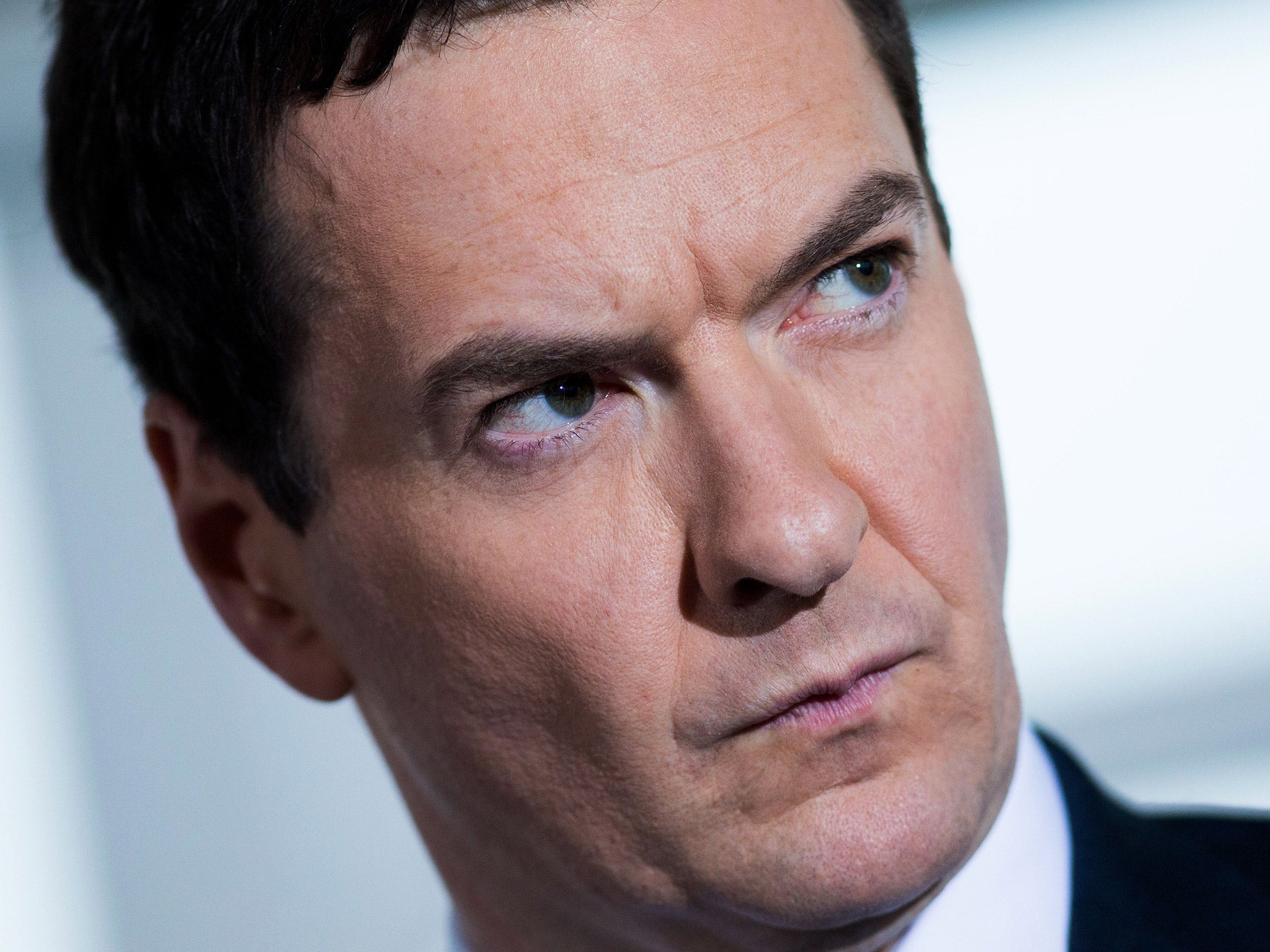Chancellor ignored advice from Treasury to launch Help to Buy scheme
Exclusive: Treasury advice suggested the majority of the purchases made through the scheme 'would likely have happened anyway over time'

The Chancellor’s economic justification for his Help to Buy programme was contradicted by the Treasury’s own internal analysis, The Independent has learned.
George Osborne has repeatedly defended the housing finance-support scheme by arguing it will stimulate more housing construction.
Under “part one” of the scheme, the Government lends housebuyers up to 20 per cent of the value of new-build properties. This means buyers only need to find deposits of around 5 per cent of the purchase price.
Last September, the Chancellor claimed Help to Buy “is driving a big increase in house building, boosting the construction industry and increasing housing supply”.
But Treasury advice from two years ago, when the policy was being formulated, predicted that such equity loans “will have a limited impact on housing supply since most of the sales are likely to be for homes which would have been built anyway”.
The advice, obtained by The Independent though a Freedom of Information request, also suggested the majority of the purchases made through the scheme “would likely have happened anyway over time”.
See the documents here:
Help to Buy: Equity Loan
Help to Buy: Mortgage Guarantee
The question of additional housing supply is crucial because many economists argue the impact of the policy has been to support buyer demand rather than stimulate new construction.
The fact that the original Treasury analysis of the policy is apparently at odds with Mr Osborne’s public arguments is likely to prove an embarrassment for the Chancellor as Help to Buy approaches its second anniversary.
Other documents show that Treasury’s initial advice on “part two” of Help to Buy policy – which provides a state guarantee for mortgages – was overly optimistic about its impact on demand and construction.
The report suggested that if there was widespread take-up of the scheme, and the number of housing transactions increased by 8 per cent, “there could be a similar increase in house-building activity compared to a baseline of no change in lending conditions”.
However, since the final quarter of 2013 the number of property transactions has grown by just 2 per cent according to the latest HMRC figures.
Official housing construction figures have also been underwhelming. Since the first stage of Help to Buy was launched, in the first quarter of 2013, housing starts in England have risen by 15 per cent, from 28,630 to 32,890 in the third quarter of last year. But since the second phase was launched in the final quarter of 2013 starts are up by just 1 per cent.
The International Monetary Fund warned in 2013 that Help to Buy could pump up house prices and end up making housing less, not more, affordable for first-time buyers.
By last December, 41,533 properties had been bought using the Help to Buy equity loan. And by September 2014 30,269 had accessed the mortgage guarantee (its first full-year in operation).
The equity part of the scheme was originally supposed to last three years. But last March the Chancellor said it would be extended until 2020. The Bank of England has been asked to review annually whether the mortgage review element poses a threat to financial stability. The Bank concluded last year that it was not and that Help to Buy had not been a “material driver” of house price growth.
A Treasury spokesperson said: “The Bank of England has confirmed that the Help to Buy mortgage guarantee has not pushed up house prices, while prominent industry figures have welcomed the Help to Buy equity loan as boosting housing supply. Every single equity loan is provided to support the purchase of a brand new house.”
Help to buy: how it works
Help to Buy is a government scheme with two parts. The first part offers equity loans to buyers of newly built homes. The second part offers mortgage guarantees to buyers with a deposit as small as 5 per cent.
Subscribe to Independent Premium to bookmark this article
Want to bookmark your favourite articles and stories to read or reference later? Start your Independent Premium subscription today.

Join our commenting forum
Join thought-provoking conversations, follow other Independent readers and see their replies